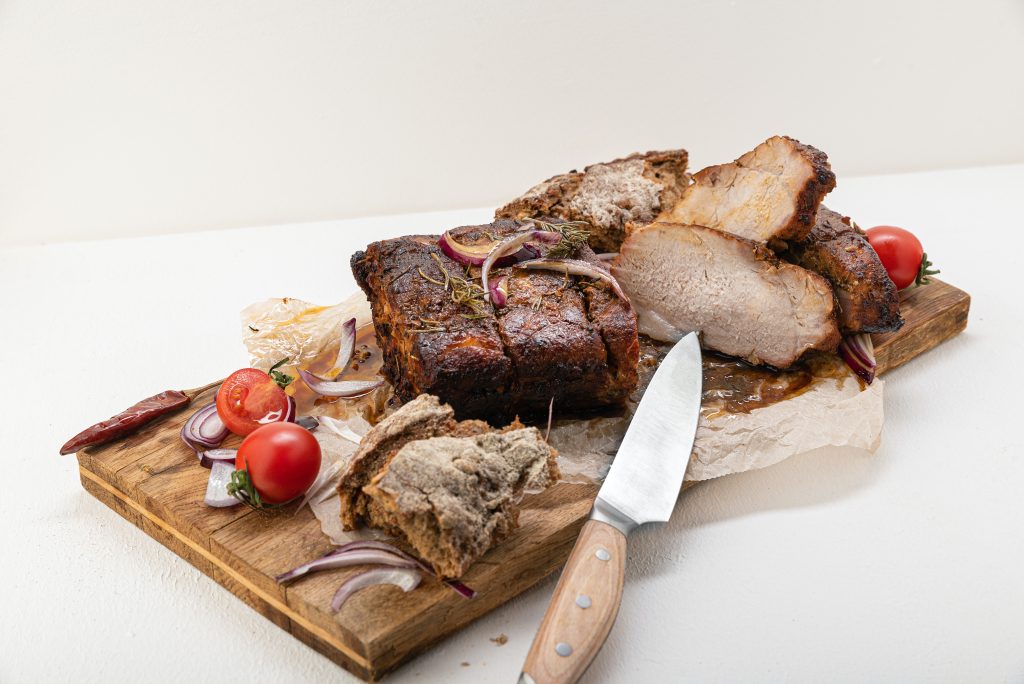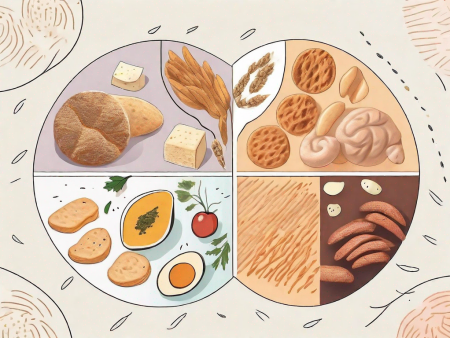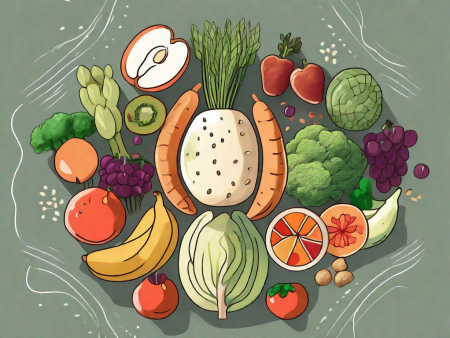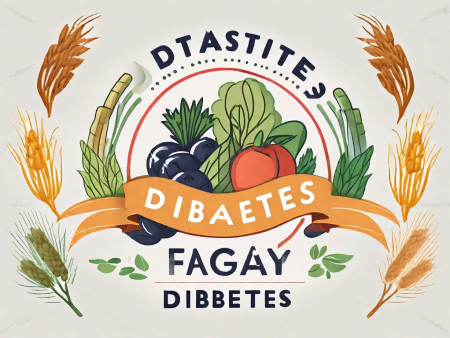Learn about the numerous health benefits of incorporating pork tenderloin into your diet.
Discovering the Benefits of Pork Tenderloin in a Diet
When it comes to healthy eating, there are a lot of options out there, but have you ever considered the deliciousness and versatility of pork tenderloin? This lean cut of meat is packed with nutrients that can do wonders for your diet. Let’s dive into the nutritional profile of pork tenderloin and explore why it should be on your menu!
Understanding the Nutritional Profile of Pork Tenderloin

Before we go any further, let’s break down the macronutrients found in this tasty cut of meat. Pork tenderloin is a great source of protein, with 23 grams per 3-ounce serving. And guess what? It’s also low in fat! That’s right, this lean meat only contains about 3 grams of fat, making it a heart-healthy choice.
But the goodness doesn’t stop there! Pork tenderloin is also a rich source of vitamins and minerals. It’s loaded with B vitamins such as thiamin, niacin, and B12, which play a crucial role in energy production. Not to mention, it’s packed with essential minerals like iron, zinc, and selenium. Talk about a nutrient powerhouse!
Let’s dive deeper into the nutritional benefits of pork tenderloin. Protein is an essential macronutrient that plays a vital role in building and repairing tissues in our body. It is also responsible for the production of enzymes, hormones, and antibodies. So, if you’re looking to meet your protein needs, pork tenderloin is a fantastic choice.
Now, let’s talk about the low fat content in pork tenderloin. The low-fat nature of this cut makes it an excellent option for individuals who are conscious of their fat intake. It is important to note that not all fats are bad for you. In fact, our bodies need some fat for energy and to absorb certain vitamins. However, excessive consumption of saturated and trans fats can increase the risk of heart disease. That’s why opting for lean meats like pork tenderloin can be a smart choice for maintaining a healthy heart.
In addition to being a great source of protein and low in fat, pork tenderloin is also rich in essential vitamins. B vitamins, such as thiamin, niacin, and B12, are crucial for converting food into energy. Thiamin helps in the metabolism of carbohydrates, while niacin plays a role in the breakdown of fats and proteins. Vitamin B12 is essential for the production of red blood cells and maintaining a healthy nervous system. Including pork tenderloin in your diet can help ensure you’re getting an adequate intake of these important vitamins.
But that’s not all! Pork tenderloin is also packed with essential minerals that support various bodily functions. Iron, for instance, is necessary for the production of hemoglobin, a protein in red blood cells that carries oxygen throughout the body. Zinc is involved in immune function, wound healing, and DNA synthesis. Selenium acts as an antioxidant, protecting cells from damage caused by free radicals. By incorporating pork tenderloin into your meals, you can naturally boost your intake of these vital minerals.
So, whether you’re looking for a protein-rich option, a low-fat choice, or a nutrient-dense meal, pork tenderloin has got you covered. Its impressive nutritional profile makes it a versatile and delicious addition to any diet. Next time you’re at the grocery store, consider picking up some pork tenderloin and enjoy its many health benefits!
Incorporating Pork Tenderloin into Your Diet
Now that you know the nutritional benefits of pork tenderloin, it’s time to get cooking! There are so many delicious ways to enjoy this lean and flavorful cut of meat while keeping your diet on track. Let’s explore a few cooking methods that will bring out the best flavors.
Cooking Methods for Pork Tenderloin
One popular cooking method is roasting. Simply season your tenderloin with your favorite herbs and spices, pop it in the oven, and let the magic happen. The result? A juicy and tender piece of meat that you won’t be able to resist. The aroma that fills your kitchen as the pork tenderloin slowly cooks to perfection is simply irresistible.
If you’re into a smoky flavor, grilling is the way to go. Marinate your tenderloin in a tangy sauce, fire up the grill, and let the char marks add a delicious touch. The combination of the smoky flavor from the grill and the succulent pork tenderloin will make your taste buds dance with joy. It’s the perfect dish for a summer barbecue or a cozy gathering with friends and family.
And for those busy weekdays when time is of the essence, why not try pan-searing? Sear the tenderloin on high heat, then finish it off in the oven for a perfectly cooked piece of meat. The sizzling sound as the tenderloin hits the hot pan creates a mouthwatering crust that locks in all the flavors. The result is a tender and juicy pork tenderloin that will make any weeknight dinner feel like a special occasion.
Healthy Pork Tenderloin Recipes
Now that you’re armed with different cooking methods, let’s explore some healthy recipes to keep your taste buds satisfied and your body nourished.
- Asian-inspired Stir-Fry: Slice your pork tenderloin into thin strips, then stir-fry them with colorful vegetables in a soy-ginger sauce. The combination of tender pork, crunchy vegetables, and savory sauce creates a harmonious blend of flavors that will transport you to the bustling streets of Asia. Serve it over a bed of fluffy brown rice for a well-balanced meal that will leave you feeling satisfied and energized.
- Mediterranean Skewers: Cut your tenderloin into cubes and thread them onto skewers with cherry tomatoes and bell peppers. Grill until everything is cooked to perfection. The aroma of the sizzling pork and the vibrant colors of the vegetables will transport you to the sunny shores of the Mediterranean. Top it off with a drizzle of lemon juice and a sprinkle of fresh herbs for a burst of freshness that complements the rich flavors of the pork tenderloin.
- Apple and Sage Pork Medallions: Slice your tenderloin into medallions, then sauté them in a skillet with thinly sliced apples and fragrant sage. The combination of sweet and savory flavors creates a symphony of taste that will delight your palate. The tender pork medallions, caramelized apples, and aromatic sage come together to create a dish that is both comforting and sophisticated.
With these cooking methods and recipes, you’ll never run out of ways to enjoy pork tenderloin. Whether you’re hosting a dinner party or simply cooking for yourself, incorporating this versatile and nutritious meat into your diet is a delicious and satisfying choice. So go ahead, grab a pork tenderloin, and let your culinary creativity soar!
Pork Tenderloin Vs. Other Meats
When it comes to choosing the right meat for your meals, it’s important to consider factors such as caloric content and protein levels. Let’s take a closer look at how pork tenderloin compares to other meats in these aspects.
Comparing Caloric Content
One of the key considerations for many individuals is the caloric content of the meat they consume. In this regard, pork tenderloin emerges as a winner. It is notably lower in calories compared to other popular meats, such as chicken breast and sirloin steak. This makes pork tenderloin an excellent choice for those who are conscious of their calorie intake and are looking to maintain a balanced diet.
Moreover, the lower caloric content of pork tenderloin does not compromise its taste or tenderness. It remains a delicious and succulent option that can be prepared in a variety of ways, from grilling to roasting or even pan-searing.
Protein Content Analysis
Protein is an essential nutrient that plays a crucial role in the growth, repair, and maintenance of our body tissues. When it comes to protein content, pork tenderloin does not disappoint. It provides a substantial amount of protein, comparable to other lean meats.
For individuals who lead an active lifestyle or engage in regular exercise, the protein content of pork tenderloin makes it an ideal choice. Whether you’re a gym enthusiast looking to build muscle or an athlete aiming to recover and repair after intense training sessions, pork tenderloin can be a valuable addition to your diet.
Furthermore, the protein in pork tenderloin is packed with essential amino acids, which are the building blocks of protein. These amino acids are vital for various bodily functions, including the production of enzymes and hormones, as well as the maintenance of a healthy immune system.
It’s worth noting that pork tenderloin is not only a great source of protein but also contains essential vitamins and minerals. These include thiamine, selenium, zinc, and vitamin B6, which contribute to overall health and well-being.
In conclusion, pork tenderloin stands out as a favorable choice when compared to other meats. Its lower caloric content makes it suitable for individuals watching their calorie intake, while its protein content makes it an excellent option for those seeking to meet their protein requirements. So, whether you’re looking to indulge in a delicious meal or fuel your active lifestyle, pork tenderloin is a versatile and nutritious choice.
Debunking Myths about Pork Consumption
Despite its nutritional benefits, pork consumption often comes with some myths and misconceptions. Let’s unveil the truth and address some common concerns.
Addressing Health Concerns
One misconception about pork is that it’s high in cholesterol. But fear not! Recent research has shown that the cholesterol content in pork has significantly decreased over the years. So, go ahead and enjoy that delicious pork tenderloin without worrying about your cholesterol levels!
The Truth about Pork and Heart Health
Another myth that needs to be debunked is the belief that pork is bad for your heart. In reality, lean cuts of pork, like tenderloin, can be part of a heart-healthy diet. Its low-fat content and high protein make it a great choice for those watching their heart health.
The Role of Pork Tenderloin in Weight Management
Now, let’s take a closer look at how pork tenderloin can help with weight management. You’ll be pleasantly surprised!

Satiety and Weight Loss
Protein is known to promote a feeling of fullness, making it a valuable asset in weight management. Pork tenderloin’s protein content will leave you feeling satisfied and help curb those pesky cravings. Say goodbye to unnecessary snacking!
Pork Tenderloin in Low-Carb Diets
If you’re following a low-carb diet, pork tenderloin is a fantastic choice. With minimal carbs and almost zero sugar, it won’t derail your diet plans. Enjoy a delicious and filling meal while staying true to your low-carb lifestyle.
Conclusion
Pork tenderloin isn’t just a tasty addition to your dinner plate. It’s a nutritional powerhouse that can benefit your overall health and well-being. From its lean protein to its abundance of vitamins and minerals, this cut of meat deserves a spot in your diet. So, why not give it a try? Whip up one of those delicious recipes or explore your own culinary creations. Discover the benefits of pork tenderloin and enjoy the rewards it brings to your diet!







